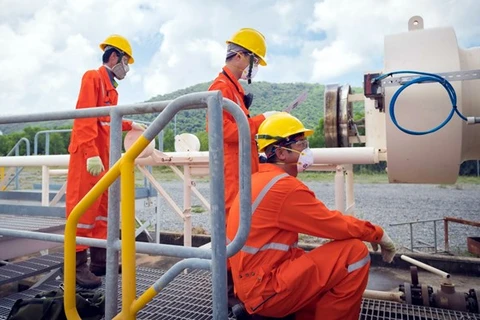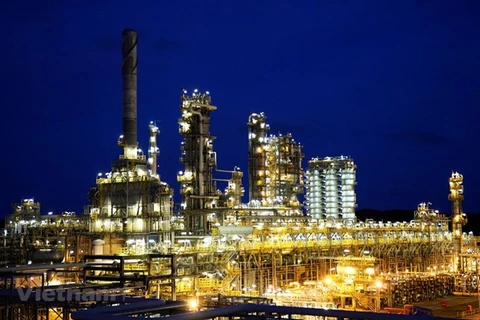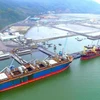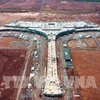 The Vietnam Oil and Gas Group (PetroVietnam) pumped an estimated 17.32 million tonnes of oil equivalent in the first ten months of this year. (Photo: PetroVietnam)
The Vietnam Oil and Gas Group (PetroVietnam) pumped an estimated 17.32 million tonnes of oil equivalent in the first ten months of this year. (Photo: PetroVietnam) Hanoi (VNA) – In the context of declining oil and gas output, one of the tasks for the Vietnam Oil and Gas Group (PetroVietnam) is to seek and implement solutions to optimise resources at oil lots and fields.
Most of the current oil and gas fields in Vietnam have been put into service since the 1986-2015 period. Many fields with large outputs have been exploited for 15-35 years and are in the final stage of exploitation. The watercut levels of these fields range from 50-90 percent, leading to decreases by about 15-25 percent per year in the output.
Limitations in mechanisms and policies have also hindered search and exploration activities. Therefore, apart from exploration and the signing of new contracts, PetroVietnam has worked on solutions to make the most of the existing blocks and fields.
However, the group is meeting a range of difficulties in terms of legal foundation as the current Oil and Gas Law does not have appropriate regulations for the exploitation of oil and gas after contractors transfer assets and operations to Vietnam.
Currently, a number of oil and gas lots and areas have been transferred to PetroVietnam after exploitation contracts have expired or concluded early.
Under directions of the Prime Minister, PetroVietnam has taken over and maintained the operations in these blocks and areas. However, a suitable legal framework for the work is still lacking.
Given this, an appropriate mechanism that is legalised is needed to enable State firms to take over such projects quickly.
Maintaining oil and gas activities amid the lack of an official legal framework has also led to passive exploitation and failure in utilising market advantages, as well as potential legal complications.
In addition, in order to maximize the return of oil and gas resources, it requires incentives to stimulate supplementary investment activities.
In fact, in some blocks and fields under expired contracts, small-scale oil and gas reserves have been discovered. However, to exploit oil and gas at these sites, it is necessary to have more favourable conditions than those in valid oil and gas contracts. With the current regulations, contractors are facing an array of difficulties in decision-making.
In its proposal to the draft Oil and Gas Law (amended), PetroVietnam suggested supplementing the legal framework for receiving and managing assets from its contractors (assets not belonging to PetroVientam but managed by the group on behalf of the Government), as well as more preferential mechanisms for some small oil fields or those near the border line.
Over the past years, the oil and gas industry has made important contributions to ensuring national energy security and maintaining economic stability in line with the national development strategy.
Maintaining PetroVietnam's business performance is considered very important, especially in the context of post-pandemic recovery. The completion of the legal framework is expected to create breakthroughs for the development of the oil and gas industry.
The Vietnam Oil and Gas Group (PetroVietnam) pumped an estimated 17.32 million tonnes of oil equivalent in the first ten months of this year, surpassing the plan for the period by 2.3 percent.
The group's total revenue reached 464.5 trillion VND (20.1 billion USD), or 83 percent of the yearly plan while its contribution to the State budget hit 58.3 trillion VND, equivalent to 86 percent of the yearly target.
Amid the difficulties caused by the COVID-19 pandemic, the group was among a few oil and gas businesses in the world that managed to post positive growth in the January-October period.
The result is attributable to response measures undertaken by PetroVietnam and its members, including cutting costs. In the past 10 months, the group reduced production costs by 8.1 trillion VND./.























